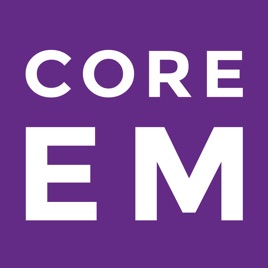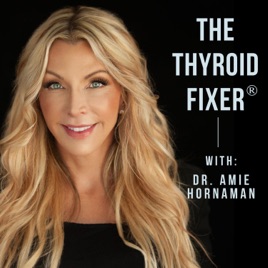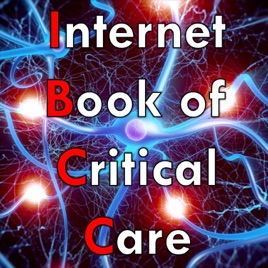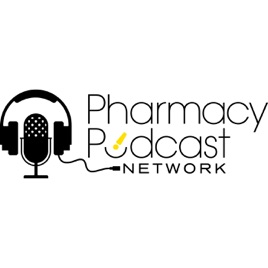
Advertise on podcast: Core EM - Emergency Medicine Podcast
Rating
4.5 from
Country
This podcast has
199 episodes
Language
Publisher
Explicit
No
Date created
2015/06/12
Average duration
-
Release period
81 days
Description
Core EM is dedicated to bringing Emergency Providers all things core content Emergency Medicine. In the true spirit of Emergency Medicine our content is available to anyone, anywhere, anytime.
Podcast episodes
Check latest episodes from Core EM - Emergency Medicine Podcast podcast
Threatened Abortion
2024/02/01
We review threatened abortion and the complexities in its care.
Hosts:
Stacey Frisch, MD
Brian Gilberti, MD
https://media.blubrry.com/coreem/content.blubrry.com/coreem/Threatened_Abortion.mp3
Download
One Comment
Tags: OBGYN
Show Notes
Background
* Defined as vaginal bleeding during early pregnancy (before 20 weeks) with a closed cervical os, no passage of fetal tissue, and IUP on ultrasound
* Occurs in 20-25% of all pregnancies.
Initial Assessment and Management
* Priority is to assess patient stability, establish good IV access, FAST may be helpful in identifying some ruptured ectopics early
* Broad differential diagnosis is crucial to avoid mistaking conditions like ectopic pregnancy for other emergencies.
* Importance of a detailed history and physical examination.
Diagnostic Approach
* Essential tests include HCG level, urinalysis, and possibly CBC + blood type/Rh status.
* Rhogam’s use is well-supported in second and third trimester bleeding; however, data is less robust for first trimester bleeding in preventing sensitization
* Importance of interpreting b-HCG with caution and understanding HCG discriminatory zones.
* Use of ultrasound imaging, both bedside and formal, to assess the pregnancy’s status.
Patient Counseling and Management
* Open and honest communication about the prognosis of threatened abortion.
* Addressing psychosocial aspects, including dispelling guilt and myths, and screening for intimate partner violence and mental health issues.
* Recommendations against bedrest and certain activities
* Lack of evidence supporting restrictions on sexual activity.
* Standard pregnancy guidelines: avoiding smoking, alcohol, drug use, and starting prenatal vitamins.
Follow-up and Precautions
* Adopting a wait-and-see approach for stable patients, with scheduled follow-ups for ultrasounds and beta-HCG tests.
* Educating patients on critical warning signs that require immediate medical attention.
* Emphasizing the importance of returning to the hospital if experiencing significant bleeding or other severe symptoms.
Take Home Points
* Threatened Abortion is defined as Experiencing abdominal pain and/or vaginal bleeding during early pregnancy (before 20 weeks), characterized by a closed cervical os and no expulsion of fetal tissue. In these cases, it is important to assess patient stability promptly.
* Keep your differential broad in these cases. The evaluation will in most cases involve a combination of labs and ultrasound imaging.
* Understand that the Rhogam certainly has a role in second and third trimester vaginal bleeding in the Rh-negative patient, and that there is a dearth of good data on its role in the first trimester – it will ultimately be a decision that is made by you, OBGYN, and the patient.
more
Syncope in Children
2024/01/03
We review a general approach to syncope in children.
Hosts:
Brian Gilberti, MD
Ellen Duncan, MD
https://media.blubrry.com/coreem/content.blubrry.com/coreem/Syncope_in_Children.mp3
Download
Leave a Comment
Tags: Cardiology, Pediatrics
Show Notes
* Initial Evaluation and Management:
* Similar initial workup for children and adults: checking glucose levels for hypoglycemia and conducting an EKG.
* The history and physical exam are crucial.
* Dextrose Administration in Children:
* Explanation of the ‘rule of 50s’ for determining the appropriate dextrose solution and dosage for children.
* ECG Analysis:
* Importance of ECG in diagnosing dysrhythmias like long QT syndrome, Brugada syndrome, catecholamine polymorphic V tach, ARVD, ALCAPA, and Wolff-Parkinson-White syndrome.
* Younger children’s dependency on heart rate for cardiac output and the risk of arrhythmias in kids with congenital heart disease.
Condition
Characteristic ECG Findings
Congenital/Acquired
Long QT Syndrome (LQTS)
Prolonged QT interval
Congenital/Acquired
Wolff-Parkinson-White Syndrome (WPW)
Short PR interval, Delta wave
Congenital
Brugada Syndrome
ST elevation in V1-V3, Right bundle branch block
Congenital
Atrioventricular Block (AV Block)
PR interval prolongation (1st degree), Missing QRS complexes (2nd & 3rd degree)
Congenital/Acquired
Supraventricular Tachycardia (SVT)
Narrow QRS complexes, Absence of P waves, Tachycardia
Congenital/Acquired
Ventricular Tachycardia
Wide QRS complexes, Tachycardia
Congenital/Acquired
Arrhythmogenic Right Ventricular Dysplasia (ARVD/C)
Epsilon waves, V1-V3 T wave inversions, Right bundle branch block
Congenital
Hypertrophic Cardiomyopathy (HCM)
Left ventricular hypertrophy, Deep Q waves
Congenital
Pulmonary Hypertension
Right ventricular hypertrophy, Right axis deviation
Acquired
Athlete’s Heart
Sinus bradycardia, Voltage criteria for left ventricular hypertrophy
Acquired
Catecholaminergic Polymorphic VT (CPVT)
Bidirectional or polymorphic VT, typically normal at rest
Congenital
Anomalous Origin of Left Coronary Artery from Pulmonary Artery (ALCAPA)
May be normal, signs of ischemia or infarction in severe cases
Congenital
* History Taking:
* Key aspects include asking about syncope with exertion, syncope after being startled, and syncope after pain or emotional stress.
more
Rapid Atrial Fibrillation
2023/12/01
We go over the treatment of rapid atrial fibrillation (afib with RVR).
Hosts:
Brian Gilberti, MD
Jonathan Kobles, MD
https://media.blubrry.com/coreem/content.blubrry.com/coreem/Rapid_Atrial_Fibrillation.mp3
Download
One Comment
Tags: Cardiology
Show Notes
Understanding AF with RVR Categories
General AF with RVR: Definition and basic understanding.
Rapid AF with Pre-excitation: Characteristics and complications.
Chronic AF in Critical Illness: Identification and special considerations.
Stability Assessment in AF with RVR
ACLS Protocols: Distinction between unstable and stable patients.
Unstable Patients: Immediate need for synchronized cardioversion, standard dose at 200 J for adults.
Stable Patients: Rate vs. rhythm control strategies, consideration of underlying etiology.
Limitations in Chronic AF: Challenges in patients with AF secondary to critical illness.
ACLS Guidelines and ECG Findings
Tachycardia with a Pulse Approach: Initial assessment guidelines.
ECG Interpretation:
Irregularly Irregular Rhythm: Absence of discernible P waves.
Ventricular Rate: Typically over 100 bpm.
QRS Complexes: Usually narrow, alterations in the presence of bundle branch block or ventricular rate-related aberrancy.
Identifying Pre-Excitation Syndromes: Signs of shortened PR interval and slurred QRS, indication of Wolff-Parkinson-White Syndrome.
AF with Pre-Excitation (WPW Syndrome)
Risk Assessment: Dangers of using AV nodal blockers (BB/CCB, digoxin, adenosine).
Alternative Management: Utilization of procainamide or amiodarone for stable patients, synchronized electrical cardioversion for unstable patients.
Treatment Approaches for AF Types
General Rapid AF:
First Line Agents: Metoprolol vs. Diltiazem.
Metoprolol Considerations: Dosing (5 mg every 10-15 minutes, max 15 mg), benefits in CAD and HF, limitations in asthma/COPD patients.
Diltiazem Advantages: Faster action, suitability in asthma/COPD, typical dosing (0.25 mg/kg initial, followed by 0.35 mg/kg if needed).
Critically Ill Patients: Tailoring treatment to underlying pathology, avoiding typical AF pharmacologic treatments.
Systematic Evaluation of Tachycardia Causes (TACHIES Mnemonic)
Thyrotoxicosis, Alcohol withdrawal, Cardiac issues, Hemorrhage, Intervals (WPW), Embolus, Sepsis.
Application of the mnemonic for a comprehensive approach to differential diagnosis.
Ultrasound in Diagnostic Assessment
Application in Undiagnosed Tachycardia: Identifying EF, pericardial effusion, valvular pathology, and signs of pulmonary embolism.
Fluid Status Evaluation: Use of ultrasound for assessing b-lines in lung scans.
Management of Chronic AF with HD Instability
more
Electrical Storm
2023/11/01
We discuss Electrical Storm (VT storm) and how to care for the very irritable heart.
Hosts:
Brian Gilberti, MD
Reed Colling, MD
https://media.blubrry.com/coreem/content.blubrry.com/coreem/Electrical_Storm.mp3
Download
Leave a Comment
Tags: Cardiology
Show Notes
Background/Overview of VT:
Definition: What makes it a storm
Three or more sustained episodes of VF, VT, or appropriate ICD shocks in a 24-hour period
Pathophysiology: Understanding the origin and mechanism
Sympathetic drive/adrenergic surge
Underlying pathology: Sodium channelopathies, infiltrative disease like cardiac sarcoidosis, etc.
RF’s / trigger / population (reversible cause in ~25% of patients)
MI
Electrolyte Derangements (emphasis on potassium and magnesium)
New/worsening heart failure
Catecholamine Surge
Drugs (stimulants, cocaine, amphetamines, etc)
QT Prolongation
Thyrotoxicosis
Clinical Presentation:
Symptoms of VT: spectrum of symptoms – from palpitations to syncope to cardiac arrest
Differentiating VT from other potential ER presentations.
Diagnostics in ER:
Electrocardiogram (ECG): Recognizing VT patterns.
Monomorphic vs polymorphic (Torsades) may change management
Wide QRS
Fusion best
Capture beats
Concordance
AV-dissociation
Lab tests: Potassium, magnesium, troponins, TFTs, etc.
Acute Management in the ER:
Hemodynamically stable vs. unstable V
Unstable = cardioversion
Sedation
Catecholamine surge should be considered
No ideal agent
Etomidate or propofol can be considered
Ketamine may worsen irritability
Pharmacological treatments:
Amiodarone
Class III antiarrhythmic
Most studied in VT storm
First line
Beta Blockers
Propranolol
B1 and B2 activity
Non-pharmacological approaches:
Immediate synchronized cardioversion
IABP / ECMO considered for HD unstable patient
Cath lab if ischemic etiology suspected
Stellate Ganglion Block
Take Home Points
Definition: VT Storm is commonly defined as three or more sustained episodes of ventricular fibrillation, ventricular tachycardia, or appropriate ICD shocks within a 24-hour period.
Varied Presentation: Patients may experience a range of symptoms from palpitations to severe hemodynamic instability.
ECG and Diagnosis: Initial ECG may not show VT; continuous cardiac monitoring or device interrogation may be required for diagnosis.
VT Identification: Look for wide QRS, rate over 100, fusion beats, capture beats, and AV dissociation to identify VT.
Management in Hemodynamic Instability: Cardiovert if the...
more
Hyperkalemia
2023/10/01
We revisit the topic of Hyperkelamia to update our prior episode from 2015 (pre-Lokelma)
Hosts:
Brian Gilberti, MD
Jonathan Kobles, MD
https://media.blubrry.com/coreem/content.blubrry.com/coreem/Hyperkalemia.mp3
Download
2 Comments
Tags: Renal Colic
Show Notes
Introduction
* Background
Physiology:
Normal range and the significance of deviations (>5.5 mEq/L)
Epidemiology:
Prevalence of hyperkalemia in the ER
ESRD missed HD → ECG, monitor
Causes / Risk Factors
Causes
Kidney Dysfunction, Medications, Cellular Destruction, Endocrine Causes, Pseudohyperkalemia
High-Risk Medications:
Antibiotics: Bactrim, antifungals
Calcineurin inhibitors
Beta-blockers
ACE/ARB
K+ Sparing diuretics
NSAIDs
Digoxin
SUX – high risks in neuromuscular disease
Lab errors, hemolysis in samples
VBG vs Chem accuracy
When to repeat a hemolyzed sample
2023 study: Of the 145 children with hemolyzed hyperkalemia, 142 (97.9%) had a normal repeat potassium level. Three children (2.1%) had true hyperkalemia: one had known chronic renal failure and was referred to the ED due to concern for electrolyte abnormalities; the other 2 patients had diabetic ketoacidosis (DKA).
Clinical Presentation / eval
Symptomatic vs. Asymptomatic:
“First symptom of hyperkalemia is death”
If severe, ascending muscle weakness → paralysis
Point at which patients experience symptoms depends on chronicity
>7 mEq/L if chronic and can be lower if acute
Hyperkalemia can be a cause of non-specific GI symptoms
EKG Changes:
ECG findings may be the first marker the ER doc gets that something is wrong
Typical changes:
Peaked T-waves, shortened QT
Lengthening of PR interval and QRS duration
Bradycardia / Junctional rhythm
Hyperkalemia can produce bradycardia without other ECG findings
Ones associated with VT/VF/code, death in one study: QRS widening (RR = 4.74),
more
Vasopressors
2023/09/01
We go over the essential and complex topic of vasopressors in the ED.
Hosts:
Brian Gilberti, MD
Catherine Jamin, MD
https://media.blubrry.com/coreem/content.blubrry.com/coreem/Vasopressors.mp3
Download
Leave a Comment
Tags: Critical Care
Show Notes
Introduction
* Host: Brian Gilberti, MD
* Guest: Catherine Jamin, MD
* Associate professor of Emergency Medicine at NYU Langone Health
* Vice Chair of Operations
* Triple-boarded in Emergency Medicine, Internal Medicine, and Critical Care Medicine
* Topic: Vasopressors: Essential agents for supporting critically ill patients in the ED
What Are Vasopressors and When to Use Them
* Two primary mechanisms to increase blood pressure:
* Increasing systemic vascular resistance via vasoconstriction
* Increasing cardiac output via augmenting inotropy and chronotropy
* Indicators for vasopressor use:
* MAP 65
* Max Dose: No strict limit but usually add a 2nd pressor at 15-20 mcg/min
* Situational Preference: First-line for most cases of shock (septic, undifferentiated, hypovolemic, cardiogenic)
* Pros: Can be infused peripherally via large bore IV
Vasopressin
* Mechanism: Activates V1a receptors causing vasoconstriction
* Dose: Fixed, non-titratable dose of 0.04 units/min
* Situational Preference: Second-line in septic shock
* Concerns: Potential for peripheral ischemia
Phenylephrine
* Mechanism: Stimulates alpha-1 receptors causing vasoconstriction
* Starting Dose: 100 mcg/min, titrate to MAP >65
* Situational Preference: High cardiac output states, tachyarrhythmias, peri-intubation
* Concerns: Increases afterload, can worsen low cardiac output states
Epinephrine
* Mechanism: Stimulates alpha-1, beta-1 and beta-2 receptors
* Starting Dose: 5-10 mcg/min, titrate to MAP >65
* Situational Preference: Anaphylactic shock, septic cardiomyopathy
* Limitations: Can induce tachycardia, may elevate lactate levels
Escalation Strategy in Refractory Shock
* Norepinephrine -> Vasopressin (with stress dose steroids) -> Epinephrine
* Consider POCUS, lactate, central venous saturation, and acid-base status
more
Septic Joint in Children
2023/08/01
We discuss the diagnosis and management of septic arthritis in the pediatric population.
Hosts:
Brian Gilberti, MD
Ellen Duncan, MD
https://media.blubrry.com/coreem/content.blubrry.com/coreem/Septic_Joint_in_Children.mp3
Download
2 Comments
Tags: Infectious Diseases, Pediatrics
Show Notes
General
Pain in joint for pediatric patient has a broad differential, including transient synovitis and septic arthritis
Transient synovitis, also known as toxic synovitis, is a common condition affecting kids aged 3-10 and often occurs after a viral infection. It is typically self-limiting and not considered a serious condition.
Septic arthritis is an infection in the joint space, typically affecting only one joint. It is often difficult to diagnose due to the fact that many patients, particularly under the age of 3, may not be able to localize their pain to a specific joint.
Workup
Diagnostic work-up for septic arthritis begins with blood work, which includes a complete blood count (CBC), erythrocyte sedimentation rate (ESR), C-reactive protein (CRP), and blood cultures. Lyme disease studies may also be necessary since Lyme disease can cause joint pain.
Patients with transient synovitis typically have mild elevation in inflammatory markers, while those with septic arthritis usually show a significant elevation.
Imaging studies, including X-rays, ultrasound to evaluate for a joint effusion, and MRI to assess for associated osteomyelitis, are also part of the diagnostic approach.
The Kocher criteria, developed specifically for septic arthritis of the hip, are a useful tool for clinical decision-making. The criteria include fever above 38.5 C, inability to bear weight, ESR above 40, and a white blood cell count above 12,000.
1 criterion met = 3% probability of septic arthritis
2 criteria met = 40% probability of septic arthritis
3 criteria met = 93% probability of septic arthritis
4 criteria met = 99+% probability of septic arthritis
If septic arthritis is suspected, orthopedics should be consulted immediately. Joint fluid aspiration is necessary for diagnosis and should not be delayed. The fluid should be sent for cell count, gram stain, glucose, culture, and PCR if available.
Septic arthritis is most commonly caused by bacterial infections, with Staph aureus being the most common organism. In school-age children, other bacteria such as Strep pyogenes, Strep pneumoniae, and Haemophilus influenzae should also be considered. In preschool-aged children, K. kingae is also considered. In older children and neonates, the range of potential bacteria varies.
Management
more
Podcast 186.0: Hypocalcemia
2022/04/29
A quick primer on hypocalcemia in the ED.
Hosts:
Joseph Offenbacher, MD
Audrey Bree Tse, MD
https://media.blubrry.com/coreem/content.blubrry.com/coreem/hypocalcemia.mp3
Download
4 Comments
Tags: calcium, Critical Care, Endocrine
Show Notes
Swami’s CoreEM Post
Hypocalcemia Repletion:
* IV calcium supplementation with 100-300 mg Ca2+ raises serum Ca2+ by 0.5 – 1.5 mEq
* For acute but mild symptomatic hypocalcemia: 200-1000mg calcium chloride IV or 1-2g IV calcium gluconate over 2 hours
* For severe hypocalcemia: 1g calcium chloride IV or 1-2g IV calcium gluconate IV over 10 minutes repeated q 60 min until symptoms resolve
References:
* Cooper MS, Gittoes NJ. Diagnosis and management of hypocalcaemia. BMJ 2008; 336:1298.
* Desai TK, Carlson RW, Geheb MA. Prevalence and clinical implications of hypocalcemia in acutely ill patients in a medical intensive care setting. Am J Med 1988; 84:209.
* Goltzman, D. Diagnostic approach to hypocalcemia. UpToDate. UpToDate; Jul 17, 2020. Accessed April 29, 2022. https://www.uptodate.com/contents/plantar-fasciitis
* Kelly A, Levine MA. Hypocalcemia in the critically ill patient. J Intensive Care Med 2013; 28:166.
* Pfenning CL, Slovis CM: Electrolyte Disorders; in Marx JA, Hockberger RS, Walls RM, et al (eds): Rosen’s Emergency Medicine: Concepts and Clinical Practice, ed 8. St. Louis, Mosby, Inc., 2014, (Ch) 125: p 1636-53.
* Swaminathan, A. (2016, January 27). Hypocalcemia. CoreEM. Retrieved April 29, 2022, from https://coreem.net/core/hypocalcemia/
* Vantour L, Goltzman D. Regulation of calcium homeostasis. In: rimer on the Metabolic Bone Diseases and Disorders of Mineral Metabolism, 9th ed, Bilezikian JP (Ed), Wiley-Blackwell, Hoboken, NJ 2018. p.163.
Read More
more
Podcast 185.0: Anticoagulation Reversal
2022/02/11
How and when to reverse anticoagulation in the bleeding EM patient.
Hosts:
Joe Offenbacher, MD
Audrey Bree Tse, MD
https://media.blubrry.com/coreem/content.blubrry.com/coreem/AC_reversal.mp3
Download
3 Comments
Tags: Anticoagulation, Critical Care, Resuscitation
Show Notes
Coagulation Cascade:
Algorithm for Anticoagulated Bleeding Patient in the ED:
Indications for Anticoagulation Reversal:
References:
Baugh CW, Levine M, Cornutt D, et al. Anticoagulant Reversal Strategies in the Emergency Department Setting: Recommendations of a Multidisciplinary Expert Panel. Ann Emerg Med. 2020;76(4):470-485. doi:10.1016/j.annemergmed.2019.09.001
Eikelboom JW, Quinlan DJ, van Ryn J, Weitz JI. Idarucizumab: The Antidote for Reversal of Dabigatran. Circulation. 2015 Dec 22;132(25):2412-22. doi: 10.1161/CIRCULATIONAHA.115.019628. PMID: 26700008.
Fariborz Farsad B, Golpira R, Najafi H, et al. Comparison between Prothrombin Complex Concentrate (PCC) and Fresh Frozen Plasma (FFP) for the Urgent Reversal of Warfarin in Patients with Mechanical Heart Valves in a Tertiary Care Cardiac Center. Iran J Pharm Res. 2015;14(3):877-885.
Fariborz Farsad B, Golpira R, Najafi H, et al. Comparison between Prothrombin Complex Concentrate (PCC) and Fresh Frozen Plasma (FFP) for the Urgent Reversal of Warfarin in Patients with Mechanical Heart Valves in a Tertiary Care Cardiac Center. Iran J Pharm Res. 2015;14(3):877-885.
Palta S, Saroa R, Palta A. Overview of the coagulation system. Indian J Anaesth. 2014;58(5):515-523. doi:10.4103/0019-5049.144643
Siegal DM, Curnutte JT, Connolly SJ, Lu G, Conley PB, Wiens BL, Mathur VS, Castillo J, Bronson MD, Leeds JM, Mar FA, Gold A, Crowther MA. Andexanet Alfa for the Reversal of Factor Xa Inhibitor Activity. N Engl J Med. 2015 Dec 17;373(25):2413-24. doi: 10.1056/NEJMoa1510991. Epub 2015 Nov 11. PMID: 26559317.
Read More
more
Episode 184.0 Ludwig’s Angina
2021/12/09
A primer on this airway/ ID/ ENT emergency.
Hosts: Joe Offenbacher MD, A Bree Tse, MD
https://media.blubrry.com/coreem/content.blubrry.com/coreem/ludwigs_2.mp3
Download
2 Comments
Tags: Airway, ENT, Infectious Diseases
Show Notes
References:
Botha A, Jacobs F, Postma C. Retrospective analysis of etiology and comorbid diseases associated with Ludwig’s Angina. Ann Maxillofac Surg 2015; 5:168.
Boscolo-Rizzo P, Da Mosto MC. Submandibular space infection: a potentially lethal infection. Int J Infect Dis 2009; 13:327.
Brook I. Microbiology and principles of antimicrobial therapy for head and neck infections. Infect Dis Clin North Am. 2007 Jun;21(2):355-91, vi. doi: 10.1016/j.idc.2007.03.014. PMID: 17561074.
Chong W, Hijazi M, Abdalrazig M, Patil N. Respect the Floor of the Mouth. J Emerg Med. 2020 Jul;59(1):e27-e29. doi: 10.1016/j.jemermed.2020.04.015. Epub 2020 May 19. PMID: 32439254.
http://www.emdocs.net/ludwigs-angina-2/
Mohamad I, Narayanan MS. “Double Tongue” Appearance in Ludwig’s Angina. N Engl J Med 2019; 381:163.
Saifeldeen K, Evans R. Ludwig’s angina. Emerg Med J. 2004 Mar;21(2):242-3. doi: 10.1136/emj.2003.012336. PMID: 14988363; PMCID: PMC1726306.
Wolfe MM, Davis JW, Parks SN. Is surgical airway necessary for airway management in deep neck infections and Ludwig angina? J Crit Care. 2011 Feb;26(1):11-4. doi: 10.1016/j.jcrc.2010.02.016. PMID: 20537506.
Read More
more
Pneumothorax
2021/10/29
A quick overview of pneumothorax for the EM physician: the what, why, diagnosis, and treatment.
Hosts:
Joe Offenbacher, MD
Audrey Tse, MD
https://media.blubrry.com/coreem/content.blubrry.com/coreem/Pneumothorax_CoreEM_podcast.mp3
Download
One Comment
Tags: #pneumothorax #FOAMed
Show Notes
Shownotes:
CoreEM Pulmonary Ultrasound Post
References:
Bense L, Lewander R, Eklund G, et al. Nonsmoking, non-alpha 1-antitrypsin deficiency-induced emphysema in nonsmokers with healed spontaneous pneumothorax, identified by computed tomography of the lungs. Chest 1993; 103:433.
Bense L, Wiman LG, Hedenstierna G. Onset of symptoms in spontaneous pneumothorax: correlations to physical activity. Eur J Respir Dis 1987; 71:181.
Brown SGA, Ball EL, Perrin K, Asha SE, Braithwaite I, Egerton-Warburton D, Jones PG, Keijzers G, Kinnear FB, Kwan BCH, Lam KV, Lee YCG, Nowitz M, Read CA, Simpson G, Smith JA, Summers QA, Weatherall M, Beasley R; PSP Investigators. Conservative versus Interventional Treatment for Spontaneous Pneumothorax. N Engl J Med. 2020 Jan 30;382(5):405-415. doi: 10.1056/NEJMoa1910775. PMID: 31995686.
Chardoli M, Hasan-Ghaliaee T, Akbari H, Rahimi-Movaghar V. Accuracy of chest radiography versus chest computed tomography in hemodynamically stable patients with blunt chest trauma. Chin J Traumatol 2013; 16:351.
Chan KK, Joo DA, McRae AD, et al. Chest ultrasonography versus supine chest radiography for diagnosis of pneumothorax in trauma patients in the emergency department. Cochrane Database Syst Rev 2020; 7:CD013031.
Ebrahimi A, Yousefifard M, Mohammad Kazemi H, et al. Diagnostic Accuracy of Chest Ultrasonography versus Chest Radiography for Identification of Pneumothorax: A Systematic Review and Meta-Analysis. Tanaffos 2014; 13:29.
Gobbel Jr WG, Rhea Jr WG, Nelson IA, Daniel RA. Spontaneous pneumothorax. J Thorac Cardiovasc Surg 1963; 46:331.
Lesur O, Delorme N, Fromaget JM, et al. Computed tomography in the etiologic assessment of idiopathic spontaneous pneumothorax. Chest 1990; 98:341.
Lichtenstein DA, Mezière G, Lascols N, et al. Ultrasound diagnosis of occult pneumothorax. Crit Care Med 2005; 33:1231.
Melton LJ 3rd, Hepper NG, Offord KP. Influence of height on the risk of spontaneous pneumothorax. Mayo Clin Proc 1981; 56:678.
Ohata M, Suzuki H. Pathogenesis of spontaneous pneumothorax. With special reference to the ultrastructure of emphysematous bullae. Chest 1980; 77:771.
Sahn SA, Heffner JE. Spontaneous pneumothorax. N Engl J Med 2000; 342:868.
Read More
more
Episode 182.0 – Wellens
2021/09/01
An interesting back story on this must-not-miss EKG finding in the ED!
Hosts:
Joseph Offenbacher, MD
Audrey Bree Tse, MD
https://media.blubrry.com/coreem/content.blubrry.com/coreem/CoreEM_Wellens.mp3
Download
One Comment
Tags: #FOAMed, #wellens, Cardiology, EKG, STEMI
Show Notes
Hosts: Joe Offenbacher MD, Audrey Bree Tse MD
EKG Findings in de Zwaan C, Bär FW, Wellens HJ. Characteristic electrocardiographic pattern indicating a critical stenosis high in left anterior descending coronary artery in patients admitted because of impending myocardial infarction. Am Heart J. 1982 Apr;103(4 Pt 2):730-6. doi: 10.1016/0002-8703(82)90480-x. PMID: 6121481.
Table 1 in de Zwaan C, Bär FW, Wellens HJ. Characteristic electrocardiographic pattern indicating a critical stenosis high in left anterior descending coronary artery in patients admitted because of impending myocardial infarction. Am Heart J. 1982 Apr;103(4 Pt 2):730-6. doi: 10.1016/0002-8703(82)90480-x. PMID: 6121481.
REFERENCES:
de Zwaan C, Bär FW, Wellens HJ. Characteristic electrocardiographic pattern indicating a critical stenosis high in left anterior descending coronary artery in patients admitted because of impending myocardial infarction. Am Heart J. 1982 Apr;103(4 Pt 2):730-6. doi: 10.1016/0002-8703(82)90480-x. PMID: 6121481.
Lee, M., & Chen, C. (2015). Myocardial Bridging: An Up-to-Date Review. Journal of Invasive Cardiology, 27(11), 521–528.
https://lifeinthefastlane.com/ecg-library/wellens-syndrome/
Lin AN, Lin S, Gokhroo R, Misra D. Cocaine-induced pseudo-Wellens’ syndrome: a Wellens’ phenocopy. BMJ Case Rep. 2017 Dec 14;2017:bcr2017222835. doi: 10.1136/bcr-2017-222835. PMID: 29246935; PMCID: PMC5753703.
Rhinehardt, J., Brady, W. J., Perron, A. D., & Mattu, A. (2002). Electrocardiographic manifestations of Wellens’ syndrome. The American Journal of Emergency Medicine, 20(7), 638–643. https://doi.org/10.1053/ajem.2002.34800
Tandy, TK; Bottomy DP; Lewis JG (March 1999). “Wellens’ syndrome”. Annals of Emergency Medicine. 33 (3): 347–351. PMID 10036351. doi:10.1016/S0196-0644(99)70373-2. (via Wikipedia)
Read More
more
Podcast reviews
Read Core EM - Emergency Medicine Podcast podcast reviews
ChGutz
2023/09/05
The Best Emergency Medicine Podcast!
Excellent coverage of both pediatric and adult emergency medicine topics. Artfully designed with a strong foundation in evidence based medicine.
Irritated in NY
2022/04/22
Anticoagulant reversal bad sound
As previously mentioned, great content, but the sound quality was incredibly quiet on this episode. Such that I couldn’t listen to it in the car. Keep...
more
Yomakeyao
2023/08/18
Can’t hear it
I have my volume turned all the way up and still can’t hear what they’re saying
Vincent Battistini
2022/06/06
Audio issues
All the great EM content in the world doesn’t count for nothing if I can’t hear anything. Podcast has some serious audio/volume issues.
JordoElGuero
2022/02/20
Good podcast
Good topics, good info. The audio is always exceptionally quiet compared to other podcasts though, even with volume at the max
Hfvubcdjm
2020/02/23
Not just for medical students!
I am in emergency room nurse and this has definitely helped my practice and ability to communicate with residents and attending MDs about patient pres...
more
kgibs997
2021/12/28
Informative needs some personality
Love the info, just wish these two didn’t sound like they were reading off of a script. It’s tough to stay engaged even with all the great info. Too m...
more
b-la-kay
2021/03/18
Not very engaging
Good content but chemistry just seems off. Really learn a lot but I have to make sure to drink my coffee beforehand. There are other podcasts that are...
more
Jon V xyz123
2020/12/31
The master volume is too low
Should be adjusted by the audio engineer.
Sher Ali Khan
2018/07/30
Quick, efficient and practical review
Very ice Job. I am intense medicine and I enjoy listening to it for my Hospital based practice in residency
Podcast sponsorship advertising
Start advertising on Core EM - Emergency Medicine Podcast & sponsor relevant audience podcasts
You may also like these medicine Podcasts

4.8
364
289
The Doctor's Kitchen Podcast
Dr Rupy Aujla

4.7
471
302
Emergency Medicine Cases
Dr. Anton Helman

4.8
344
391
The Thyroid Fixer
Dr. Amie Hornaman

4.9
624
136
The Internet Book of Critical Care Podcast
Adam Thomas & Josh Farkas

4.8
634
217
AFP: American Family Physician Podcast
American Academy of Family Physicians

4.8
1120
208
Psychiatry & Psychotherapy Podcast
David Puder, M.D.

4.6
231
104
Psychopharmacology and Psychiatry Updates
Psychopharmacology Institute

5
87
38
Born to Heal: Holistic Healing for Optimal Health
Dr. Katie Deming, M.D. | Conscious Oncologist

4.6
157
1099
Pharmacy Podcast Network
Pharmacy Podcast Network

4.5
412
353
JAMA Clinical Reviews
JAMA Network



